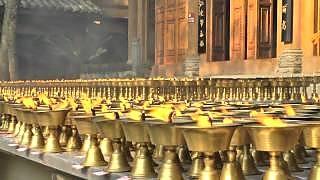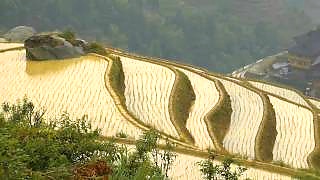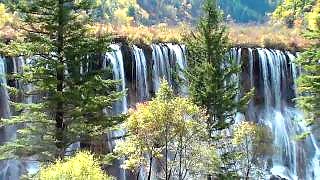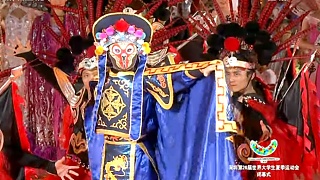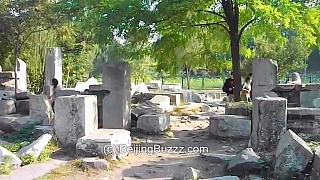
|
With Little Journey ...
Bonus film - the Expo Culture Park ...
New World City, located to the west of Nanjing Road pedestrian street.
The New World area in Shanghai is a vibrant and bustling commercial and entertainment district located in the Huangpu District, one of the city's most central and historic areas. Here are some key highlights and features of the New World area:
### 1. **Shopping and Retail**
- **New World City Mall**: This is one of the prominent shopping malls in the area, offering a wide variety of local and international brands. It has multiple floors with fashion, electronics, and lifestyle stores, catering to diverse shopping needs.
- **Nanjing Road**: Adjacent to the New World area, Nanjing Road is one of the world's busiest shopping streets, lined with large department stores, specialty shops, and boutiques.
### 2. **Dining and Entertainment**
- **Restaurants and Cafes**: The area is home to numerous dining options ranging from upscale restaurants to casual cafes. Visitors can enjoy a variety of cuisines including traditional Chinese, Asian fusion, and Western dishes.
- **Entertainment Venues**: The New World area features various entertainment options such as cinemas, karaoke bars, and live performance venues. The Shanghai Grand Theatre and the Lyceum Theatre are notable nearby cultural spots offering a range of performances including plays, musicals, and concerts.
### 3. **Tourist Attractions**
- **People's Square**: Located close to the New World area, People's Square is a major public square and a central hub for cultural and social activities. It houses the Shanghai Museum, Shanghai Urban Planning Exhibition Hall, and the People's Park.
- **Madame Tussauds Shanghai**: This famous wax museum is a popular attraction where visitors can see lifelike wax figures of celebrities, historical figures, and cultural icons.
### 4. **Transportation**
- **Metro Access**: The New World area is well-connected by Shanghai's extensive metro system. People's Square Station, which is one of the busiest interchange stations, serves lines 1, 2, and 8, providing easy access to other parts of the city.
- **Road Networks**: The area is also accessible by various bus routes and taxis, making it convenient for both locals and tourists to reach.
### 5. **Cultural and Historic Significance**
- **Historic Architecture**: The area around New World features a mix of modern and historic architecture, reflecting Shanghai's rich cultural heritage and rapid modernization.
- **Local Culture**: Visitors can experience the local culture through street performances, traditional markets, and seasonal festivals that often take place in and around the New World area.
Overall, the New World area in Shanghai is a dynamic and multifaceted district that offers a blend of shopping, dining, entertainment, and cultural experiences, making it a must-visit for anyone exploring the city.
Expo Culture Park, also known as Shanghai Expo Culture Park, is a significant green space and cultural area located in the Pudong District of Shanghai. Developed on the former site of the 2010 Shanghai World Expo, the park is designed to be a major urban green space and cultural landmark. Here are some key features and highlights of Expo Culture Park:
### 1. **Green Spaces and Natural Scenery**
- **Large Green Areas**: The park features extensive green spaces, including lawns, gardens, and tree-lined paths. It's designed to provide a natural retreat within the urban environment.
- **Floral Displays**: Various sections of the park are dedicated to flower gardens and seasonal floral displays, offering vibrant colors and scents throughout the year.
### 2. **Cultural and Artistic Installations**
- **Public Art**: The park is home to numerous public art installations and sculptures, contributing to its cultural atmosphere. These works often reflect themes related to nature, urban life, and the legacy of the Expo.
- **Exhibition Halls**: There are exhibition spaces within the park where cultural events, art exhibitions, and community activities are regularly held.
### 3. **Recreational Facilities**
- **Walking and Cycling Paths**: The park has well-maintained paths for walking, jogging, and cycling, making it a popular spot for outdoor exercise.
- **Children's Play Areas**: Designated areas with playgrounds and interactive installations cater to families with children, offering safe and engaging environments for play.
### 4. **Water Features**
- **Lakes and Waterways**: The park includes several artificial lakes and waterways, adding to the scenic beauty and providing habitats for local wildlife.
- **Boating**: Visitors can often rent boats to explore the lakes, enjoying a peaceful activity amidst the urban setting.
### 5. **Theater and Performance Venues**
- **Open-Air Theaters**: The park includes open-air theaters and performance spaces where concerts, theatrical performances, and cultural festivals are held.
- **Music and Dance Performances**: Regularly scheduled performances and events showcase both traditional and contemporary music and dance, drawing both locals and tourists.
### 6. **Environmental Sustainability**
- **Eco-Friendly Design**: The park is designed with sustainability in mind, incorporating green building practices, renewable energy sources, and water conservation measures.
- **Biodiversity Conservation**: Efforts are made to preserve and enhance local biodiversity, with native plant species and habitats integrated into the park's design.
### 7. **Historical Significance**
- **Legacy of the Expo**: As the site of the 2010 Shanghai World Expo, the park retains elements that commemorate the event, including some of the original pavilions and structures that have been repurposed for cultural and recreational use.
### 8. **Accessibility**
- **Transportation**: The park is easily accessible via public transportation, including metro lines and buses. It’s located in a well-connected area of Pudong, making it convenient for visitors from across the city.
- **Visitor Facilities**: The park is equipped with visitor centers, restrooms, and dining options, ensuring a comfortable experience for guests.
Expo Culture Park serves as a significant cultural and recreational hub in Shanghai, providing a blend of natural beauty, cultural enrichment, and historical significance. It’s a prime example of urban renewal, transforming the legacy of the Expo into a lasting public asset for the city.
|
 What China does so much better than the West
What China does so much better than the West





